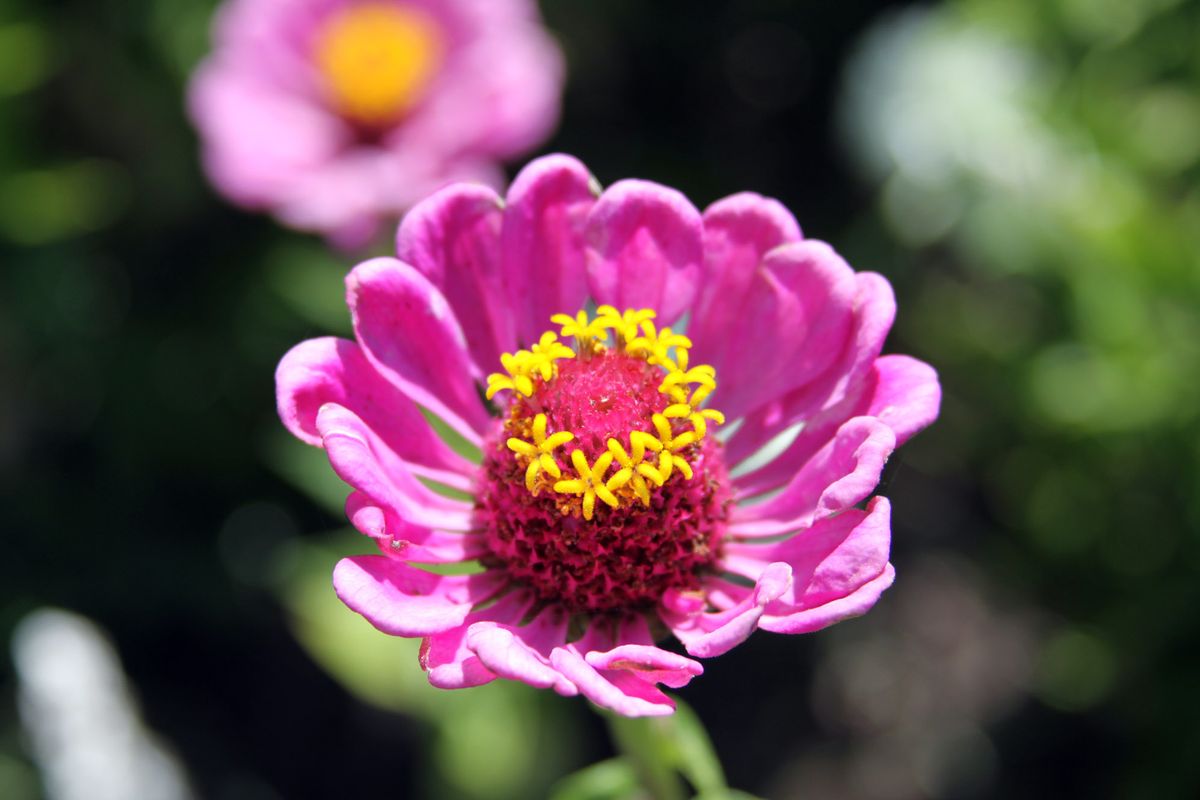Cut-flower garden can add color, freshness without diminishing beds

One of the nicest things about growing flowers is bringing them into our homes to enjoy. They add color, fragrance and a sense of freshness to any room.
But sometimes we hesitate to cut flowers for fear of diminishing the colorful display in our garden beds. Planting a separate cut-flower garden is an ideal solution.
In “The Flower Gardener’s Bible” (Storey Books, $27.50), authors Lewis and Nancy Hill write, “If you need large quantities of cut flowers for your own pleasure or to exhibit or give away, you may want to do as we do and grow them separately in what the Victorians called a ‘cutting garden.’ In such a garden, you can pick to your heart’s content without concern about the effect on the bed when you’ve finished.”
Getting started
When it comes to selecting a site and preparing the soil for your cutting garden, Eberhard Schmidt, Master Gardener and president of The Friends of Manito, knows what it takes.
“Full sun is the number one requirement,” he said. “Choose an area that gets at least six hours of sunlight a day because annuals love the sun.”
Schmidt recommends adding plenty of compost to the soil. “If you have clay soil, compost will help loosen and aerate the soil so the plants will grow well,” he said. “If your soil is sandy, go to a garden center and pick up a bag of composted manure and dig it into the soil.”
Even if you’ve already prepared your site, he said, you can put compost in the rows between the plants and carefully dig it into the soil. “Coffee grounds are good, too, but be sure to incorporate them into the soil instead of layering it on the ground, which makes it hard for water to pass through.”
To get your plants off to a good start in the spring, he suggests adding a balanced fertilizer, such as 10-10-10 or 15-15-15 to the soil. After that, use a fertilizer with less nitrogen in it, like 5-10-10. “If you apply too much nitrogen,” Schmidt said, “the plants will grow rapidly but they won’t flower very well. They need phosphorus and potassium for that. Fertilize three times during the growing season.”
Choosing seeds and plants
There is a wide variety of annuals – plants that grow, bloom and die in one season – that make good cut flowers. Attributes to look for include ones that are long-lasting, have bright flower colors, interesting textures or pleasing scents. Refer to the accompanying information box for ideal plants to grow.
Some of the best annual cut flowers are zinnias. They come in perky colors like purple, red, orange and yellow. Once placed into a vase, they soak up a lot of water, which makes them last a very long time. Try California Giant, Cactus mix, Whirlygig mix or the petite Profusion collections.
Cosmos is a delightful, old-fashioned flower with delicate foliage. Varieties that have pink, magenta or white blooms with single, double or ruffled petals include Seashell, Sensation and Double Click. For flowers with pizzazz, the Bright Lights and Cosmic collections feature yellow, orange and red blossoms.
Nigella, or love-in-a-mist, adds a lot of interest to an arrangement. With their puffy seedpods, pale purple, blue or white blossoms and fernlike foliage, they are a must in any cutting garden.
Gloriosa daisies aren’t quite hardy enough to be a perennial in this region but their striking flowers are a standout in bouquets. The flowers have a long blooming season. Known traditionally for their gold flowers, they are now available in warm yellow, burgundy and even pink. Try Cappuccino, Cherry Brandy or Prairie Sun with its green centers.
Long ago, sunflowers only came with bright yellow flowers but now there are glorious colors that are pretty in the garden and arrangements. The new varieties range from heights of 28 inches up to 12 feet. Colors include burgundy, burnt orange, sunset shades and pale yellow. Fun varieties are Autumn Beauty, Italian White, Mammoth Red, Razzmatazz, Starburst and Van Gogh mix.
Sweet peas are another old-fashioned flower that has been grown for generations. Known for their delightfully sweet fragrance, their vines can reach 5 to 6 feet, so they will require some sort of trellis to climb. Flowers are typically pink, purple or white.
The spiky flowers of salvias add height to arrangements and also look stunning in the garden. Plants range from 1 to 3 feet tall and attract hummingbirds. Try varieties like Bonfire, Black and Blue, Coral Nymph and Victoria Blue.
Cut flowers should be picked in early morning. Use sharp scissors to avoid crushing the stems and remove the lowest leaves before arranging them in a vase. Take time to enjoy the beauty of what you’ve grown.